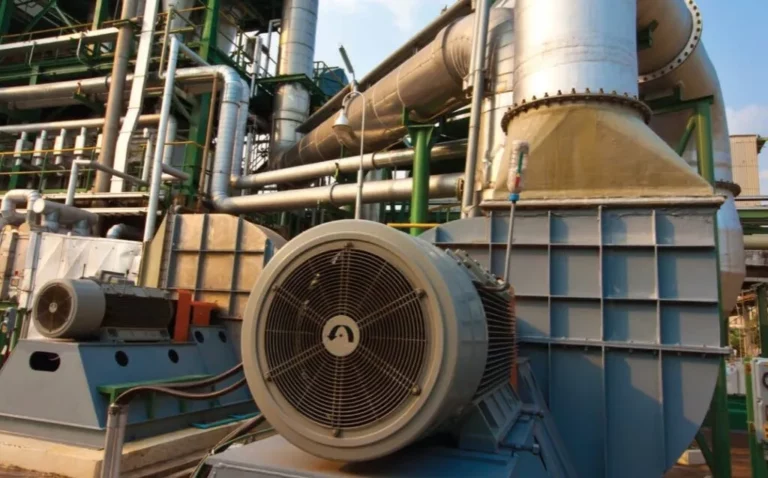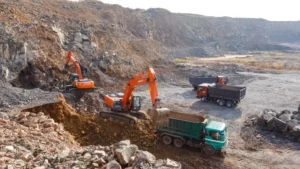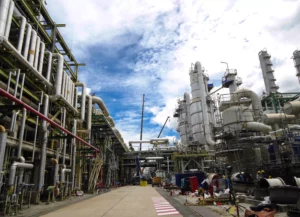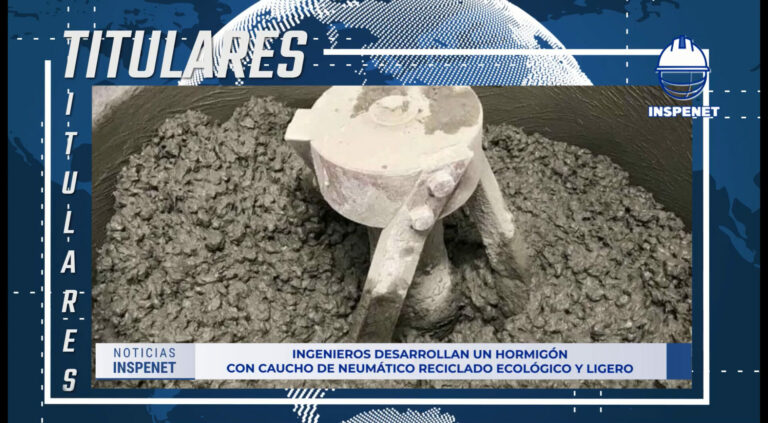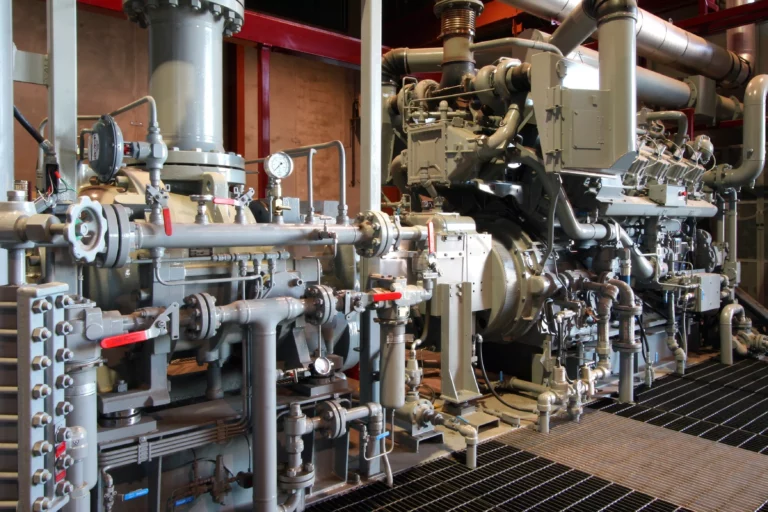Introduction
The performance of industrial fans is an essential factor to guarantee efficient operations in various sectors. Proper selection, efficient design and proactive maintenance are significant elements to optimize the performance of this equipment, ensuring safe and productive operating conditions.
In this article, we will explore answers to key questions about industrial fan performance , with a technical focus on advanced strategies and technologies. Maximizing the efficiency of industrial fans is key to improving profitability and sustainability in industrial environments. They are essential in a wide variety of industrial and commercial applications; However, in this content only the topic concerning the area of oil and gas operations will be addressed.
The fundamental purpose of this article is to explore the importance of fans in petroleum operations, the key strategies and techniques for optimizing the performance of industrial fans. It seeks to provide a deep understanding of the factors that influence the efficiency of these systems, from design to maintenance.
Technical definition and types of industrial fans in the oil area
An industrial fan is a rotating machine whose function is to move a specific mass of air and apply a certain pressure to set a gas in motion. It can also be described as a turbomachine that transfers energy to generate the pressure required to maintain a constant flow of air.
These machines are commonly used in applications such as filter chamber extraction, where the air may contain dust particles and is not as clean as in forward curved blade applications. Among the most important types are:
- Axial fans: These fans direct the airflow in the same direction as the axis of the fan. They are often called helical because the outlet flow follows a helical-shaped path. Generally, they are appropriate for moving large flows at low pressures.
- Helical fans: Suitable for moving large volumes of air at low pressures, they are used for air intake and extraction. They are typically installed on walls, built-in or in windows.
- Tubular fans: Equipped with a propeller with generally adjustable blades, these fans can move air overcoming moderate resistance. Due to their construction, they are suitable for inserting into ducts. They are used in industrial systems, such as paint booths and localized fume extraction.
Importance in oil and gas operations
In the complex environment of the oil industry, where safety and efficiency are imperative, fans play a multifaceted role. From emissions management and personnel safety to temperature control in critical facilities, proper fan operation is significant.
Fans contribute significantly to maintaining safe and productive conditions in key operations such as oil extraction, refining and transportation, they are essential to ensure efficiency, safety and productivity in various facets of the industry. Below are the key points that highlight the importance of industrial fans in this context:
- Ventilation in critical spaces (prevention of gas accumulation): In environments where hydrocarbons are handled and processed, adequate ventilation is necessary to prevent the accumulation of potentially hazardous gases, such as natural gas or petroleum vapor.
- Temperature control in industrial processes: Processes in the oil and gas industry generate considerable temperature increases. Industrial fans contribute to thermal control by cooling equipment, ensuring efficient operation and extending service life.
- Extraction of fumes and gases (safety in drilling operations): During oil drilling and extraction, fans are necessary for the quick and safe extraction of fumes and gases released, preventing risks of explosions and protecting the health of workers.
- Ventilation in confined spaces (underground environments): In exploration and drilling activities in underground areas, industrial fans ensure adequate ventilation, minimizing risks associated with confined spaces and guaranteeing safe conditions for workers.
- Pressure maintenance in specific processes (refining processes): In the refining phases, fans help maintain the appropriate pressure in reactors and distillation columns, thus optimizing the efficiency of the chemical processes involved.
- Control of contaminants and particles (controlled environments): In activities such as refining and processing, where product quality is significant, fans play an important role in removing particles and contaminants from the air, ensuring quality and safety standards.
- Energy efficiency and sustainability (resource optimization): The implementation of efficient ventilation systems contributes to the optimization of energy consumption, reducing operating costs and supporting sustainability initiatives in the oil and gas industry.
Performance optimization
Industrial fans are essential components in numerous applications, from ventilating industrial spaces to cooling equipment. The performance of an industrial fan is an important factor in the efficiency and optimal functioning of ventilation systems.
How is the performance of an industrial fan determined?
The performance of an industrial fan is evaluated through specific parameters, the most common being the air flow (volume of air moved by the fan in a given time) and the static pressure (resistance that the fan must overcome to move the air ). Understanding these indicators is essential to determine the efficiency of the system and make appropriate adjustments.
- Air flow rate (Q): Air flow rate refers to the volume of air that an industrial fan can move in a specific period. It is commonly measured in cubic meters per minute (m³/min) or cubic feet per minute (CFM). This parameter determines the fan’s ability to provide a sufficient amount of fresh air or to extract stale air from a given space. Adequate air flow guarantees effective ventilation.
- Static pressure (Ps): Static pressure is the resistance that the fan must overcome to move air through a system. It is measured in Pascals (Pa) or inches of water (in. H 2 O). The value of this variable is necessary to evaluate the efficiency of the fan by overcoming the resistance of the duct, filters or other elements present in the ventilation system. It is necessary to maintain a constant static pressure to ensure that the fan can overcome any obstacles and maintain a constant air flow.
Calculation procedure
- Determine the Air Flow (Q)
- It is measured in cubic meters per second (m³/s) or cubic feet per minute (CFM).
- Use the formula Q = A x V, where A is the cross-sectional area of the duct and V is the air velocity.
- Measure Static Pressure (Ps)
- It results from the resistance that the system offers to the air flow.
- It is measured in pascals (Pa) or inches of water (in.H 2 O).
- Power consumed (P)
- It is measured in watts (W) or horsepower (HP).
- It is the electrical power consumed by the fan.
- Yield (ηf)
- It shows how well the fan converts electrical power into useful work to move air.
- It is calculated using the formula: ηf = (Q x Ps) / P
The power used by the fan can also be expressed as: P = dp * q / (ηf; ηb; ηm)
Where:
ηf = Fan efficiency
ηb = Belt efficiency
ηm = Motor efficiency
Typical motors and belt efficiencies are as follows:
- Motor 1kW – 0.4
- Motor 10 kW – 0.87
- Motor 100 kW – 0.92
- Belt 1 kW – 0.78
- Belt 10 kW – 0.88
- Belt 100 kW – 0.93
Total efficiency (ηt)
The total efficiency of the fan can be defined as the ratio of the power delivered by the fan to the air (Q x PT) over the power consumed by the drive system. The following equation is used for its determination:
ηt = (Q x PT) / (P x 6350)
Where Q is the air flow rate, PT is the total fan pressure, 6350 is a unit conversion factor, and P is the fan motor power.
Importantly, these calculations provide an overview of fan performance and efficiency. For accurate results, it is advisable to refer to specific industry standards and the fan manufacturer’s specifications.
Strategies for optimizing the performance of Industrial fans
Today’s industrial fans require high performance capabilities, including the ability to achieve higher operating speeds while reducing operating and maintenance costs. Below are some strategies to increase the efficiency of these systems and achieve energy savings.
- Evaluation of the existing system: Conducting a thorough evaluation of the current ventilation system is the essential first step. This includes measuring air flow, static pressure and power consumed. Working with ventilation experts can provide a detailed understanding of system efficiency and suggestions for improvements.
- Identifying and Correcting Air Leaks: Air leaks can be a significant source of energy loss. Inspecting and correcting possible leaks in ducts, gaskets and seals will help optimize fan performance and prevent unnecessary air loss.
- Fan speed adjustment: These adjustments, depending on the actual air demand, can substantially reduce energy consumption. Using variable speed controls and demand-based automated control systems will help maintain optimal speed under different operating conditions.
- Implementation of heat recovery systems: In cold climates, this strategy can be highly effective. These systems use the exhaust air to preheat the intake air, thus reducing the thermal load and the need for additional energy for heating.
- Smart ventilation technologies: Incorporating smart technologies, such as air quality monitoring systems and demand-based control systems, enables dynamic adaptation to changing conditions. This ensures that the fan works efficiently according to actual needs, improving energy efficiency.
- Continuous monitoring and predictive maintenance: This allows for early detection of potential problems and facilitates a predictive maintenance approach. Addressing problems before they become critical failures not only improves reliability, but also reduces costs associated with repairs and unplanned downtime.
- Staff Training and Awareness: Optimum performance of industrial fans also depends largely on the staff who operate and maintain these systems. Providing regular training and raising staff awareness of best operating and maintenance practices ensures that the fans’ potential is maximized and operational errors are minimized.
Conclusion
Optimizing the performance of industrial fans not only improves efficiency and reduces operating costs, but also contributes to environmental sustainability by minimizing unnecessary energy consumption. Implementing these strategies will ensure optimal and sustainable performance of ventilation systems in industrial environments.
References
https://www.pmg.engineering/Presentation/37/industrial-fans-performance-efficiency/



